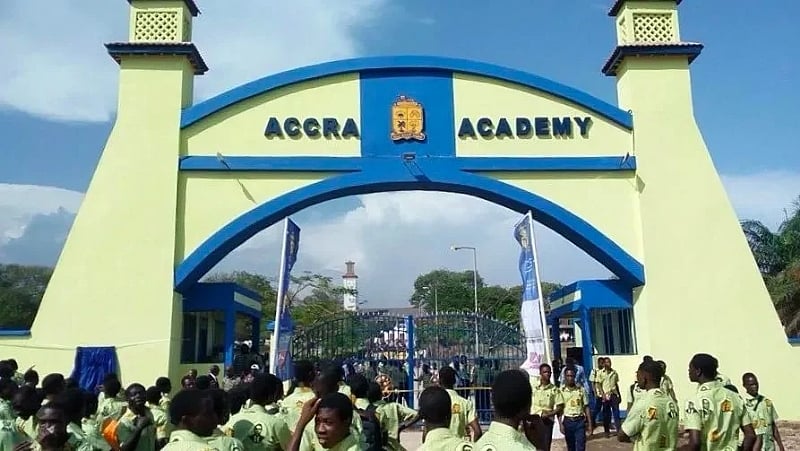This case revolves around an incident of alleged assault at Accra Academy Senior High School, where four students, one adult and three minors, were accused of attacking and extorting money from a group of form one students. The incident, captured on video and circulated on social media, came to the attention of the school authorities, prompting an investigation and subsequent legal action.
The four accused students appeared before the Dansoman Circuit Court to face charges related to the assault. Richard Ninson, the only adult among the accused, was charged with abetment of crime, specifically assault, but was absent from the court proceedings. The three minors, whose identities were withheld due to their age, were present and pleaded not guilty to charges of threat of harm, abetment of crime, and assault.
Presiding Judge Halimah El-Alawa Abdul-Basit granted bail to the three minors, releasing them into the custody of their relatives who acted as sureties. The bail amount was set at GHC10,000 for each minor. The judge’s decision to grant bail was influenced by the upcoming examinations, allowing the students to prepare. The prosecution was ordered to submit disclosures and witness statements for a Case Management Conference scheduled for a later date.
The prosecution, led by Inspector Esther Mensah and Chief Inspector Portia Nuarko, presented the details of the case to the court. The complainant, a 34-year-old tutor at Accra Academy SHS, residing in Ablekuma New Town, brought the matter to the attention of the authorities after the video surfaced online. The video allegedly showed the four accused students assaulting form one students on the school premises using a machete. One of the minors was initially brought in for questioning by the complainant and the minor’s aunt, and subsequently released on bail pending further investigation.
The investigation revealed that the incident occurred on January 17, 2025, when the form one students were praying at the school park. The accused students allegedly confronted the younger students, ordering them to kneel and demanding that one of the victims delete all data from his phone and hand it over. The accused threatened to harm the victims if they reported the incident.
The accused students further demanded a payment of GHC500 from the victim whose phone was confiscated, promising to return it upon payment. Additionally, each of the other victims was forced to contribute GHC10. The assault involved one of the accused hitting a victim in the chest and using a machete to beat him while another accused recorded the incident.
This incident highlights the concerning issue of bullying and violence within the school environment. The use of a weapon, the extortion of money, and the threats of further harm underscore the severity of the alleged actions. The legal proceedings will determine the culpability of the accused and the appropriate consequences for their actions. The case also brings to light the vulnerability of younger students and the importance of safeguarding their well-being within the school setting. The outcome of this case will likely have implications for the school’s policies on bullying and student safety.
The court’s decision to grant bail to the minors reflects the principles of juvenile justice, which prioritize rehabilitation and reintegration. The bail conditions, including the involvement of family members as sureties, aim to ensure the minors’ attendance at future court proceedings while allowing them to continue their education and prepare for their examinations. The adjournment of the case provides time for the prosecution to gather and present all necessary evidence, ensuring a fair trial for all parties involved.
The involvement of the school tutor as the complainant demonstrates the institution’s commitment to addressing the issue and cooperating with the legal process. The school’s intervention in intercepting the video and reporting the incident to the police signifies a proactive approach to preventing and addressing such incidents within the school community. The outcome of this case will likely influence the school’s approach to bullying prevention and student safety measures in the future.
The use of social media in exposing the incident played a crucial role in bringing the matter to light. The widespread circulation of the video prompted swift action from the school authorities and law enforcement. While the use of social media can have negative consequences, in this case, it served as a tool for accountability and prompted a necessary intervention to address the alleged assault. This highlights the potential of social media as a platform for reporting and addressing misconduct, especially in environments where power imbalances may exist.
The allegations against the accused students paint a disturbing picture of intimidation, violence, and extortion within the school environment. The use of a machete adds a particularly menacing element to the incident, highlighting the potential for serious harm. The demand for money from the younger students further suggests a pattern of exploitation and bullying. The court proceedings will determine the extent of the accused students’ culpability and the appropriate legal consequences for their alleged actions. The case underscores the urgent need for effective measures to address bullying and violence within schools, ensuring the safety and well-being of all students.


